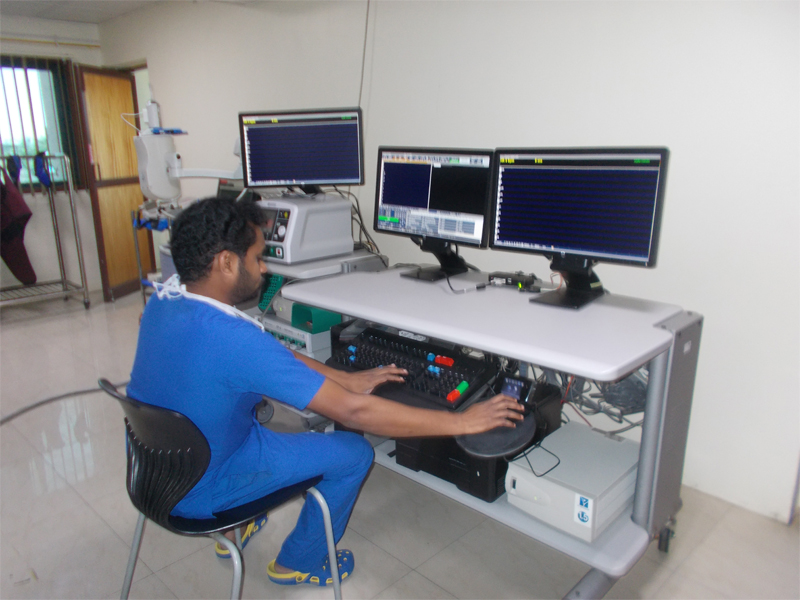Electro Physiological Study (EPS)
EPS is a study done in the cath lab using specialized equipment to study the electrical properties of the heart.
Which patients should undergo this study?
- Patients with intermittent episodes of palpitations, giddiness, fainting spells, who are Diagnosed to have abnormal heart rhythms should undergo EPS after being evaluated by a cardiologist.
- Patients suspected to have short circuits in the heart should also undergo EPS
How is EPS done?
EPS is usually done under local anaesthesia. Small electrode catheters are inserted into The heart chambers. X –rays are used to position the catheters into the heart. Tachycardia (faster heart rates) can be stimulated using the electrode catheters and ECGs are recorded to Identify and study the abnormal rhythm and also to identify the position of short circuits.
Abnormal rhythms of the heart can be due to many reasons
- When the natural pacemaker of heart develops abnormal rates/rhythms
- When the normal conduction pathway is interrupted.
- When there is extra connection joining the atria and ventricles
- When another part of the heart becomes pacemaker
Depending on the type of abnormal heart rhythm, the treatment plan will be decided.
RADIO FREQUENCY ABLATION (RFA)
It is a non-surgical method to treat some types of rapid heartbeats (Like SVT and VT)
How is it done?
This procedure is done usually under local anaesthesia in the Cardiac Cath lab following ‘EPS’. The abnormal circuit is identified using EPS. A special catheter is used to deliver the Radio-Frequency current at that spot to eliminate the ‘accessory pathway’. It uses mild, painless Radio Frequency energy to ablate/inactivate the circuit.







